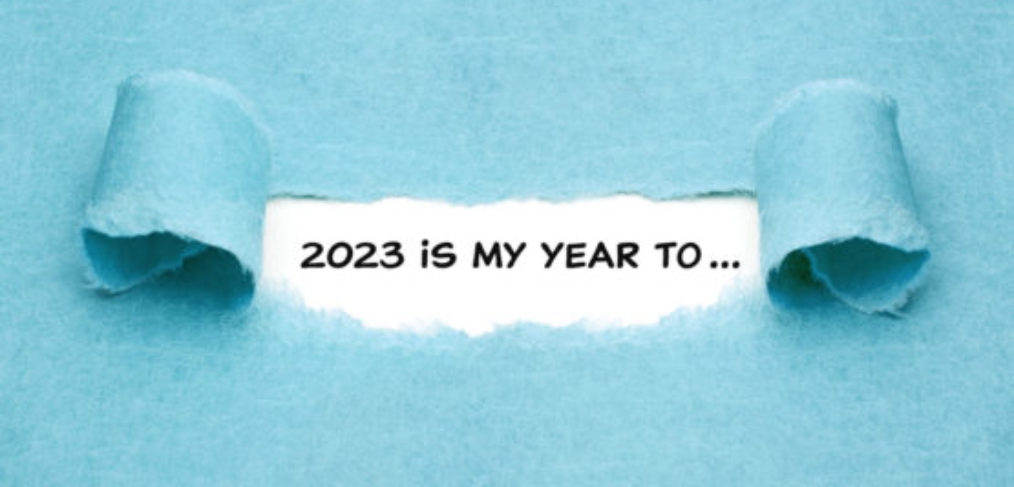New Year’s Resolutions: A Different Approach

New Year’s Eve Resolution: noun. : a promise to do something differently in the new year (1).
Sounds great! Starting tomorrow, as if by magic, what will you do differently?
Perhaps you’re going to stop eating sugar, stick to your plan of exercising regularly or finally complete that book you’ve been meaning to have published.
All of the above are just a few examples of common resolutions.
Countless studies show similar data; year after year, the most popular include various iterations of living a healthier life, Improving yourself or your happiness levels and reaching financial goals (2).
And while all are important, significant and extremely impactful goals, why is it that an estimated 80-90% of people report not sticking to their goals?
According to Forbes (3), there are three main reasons:
It’s your consciousness that needs to change before your behavior can change
You don’t have an accountability structure to help you sustain change
You are actually scared of, and completely resistant to, achieving this big goal and you won’t let yourself
In other words, not sticking to a New Year’s Resolution goes far beyond not having enough will power; rather it has much more to do with our subconscious.
We humans have extremely complex brains.
Different stimuli that we are exposed to at specific times in our lives set the stage for what later becomes our belief system; things that we believe to be factual.
Beliefs are developed as stimuli received as trusted information and stored in the memory. These perceptions are generalized and established into belief. These beliefs are involved in the moral judgment of the person. Beliefs help in decision-making (4).
And as Dr Joe Dispenza (5), famous lecturer on neuroscience and quantum physics teaches, nerve cells that fire together, wire together.
The more you believe something, the more you think that thought one more time, the more you’re hard wiring that belief into your subconscious.
However, nerve cells that no longer fire together, no longer wire together. In other words, if you don’t use it, you lose it.
This holds true to beliefs about anything, from how we see ourselves from a health perspective ( ‘ fat person’ , ‘sick person’, ‘worried person’) to a financial viewpoint (‘ bad with money’, ‘successful’) to any other category you can think of.
In Gay Hendricks’ great book, The Big Leap (6), he describes an “upper limit problem” and the four barriers to achieving what we consciously think we want.
With this in mind, the idea that we can simply state a New Year’s Resolution (because it does indeed feel good to have a goal) without getting underneath why we’ve not been able to achieve it in the past nor how we plan to do so in the future, it makes perfect sense that it’s a set up for anything but accomplishment.
Then what’s the answer?
For me, learning to meditate was key.
Meditation stands as a uniquely effective tool to change or transcend limiting beliefs. Through its regular practice, meditation begins to slowly excavate those beliefs that no longer serve you and make space for something new and more supportive (7).
So…back to those Resolutions.
Do we simply discard the idea?
Not necessarily.
The concept is great: a new year, a fresh start.
But rather than choosing the same old thing that didn’t quite work out last year (as evidenced by the fact that you’re thinking of have the same one… again!), how about considering how you’d like to feel, and make that be the focal point.
Work backwards from what changes you believe you can make now to help get you closer to that end and begin to include, or increase, the amount of time you can integrate time, even if it starts out as a few minutes per day to get into the parasympathetic, the network of nerves that relaxes your body after periods of stress or danger. It also helps run life-sustaining processes, like digestion, during times when you feel safe and relaxed (8).
Another key strategy is to include your ‘why’.
Why are you planning to do this thing, anyway?
Usually it’s because of the belief that you will be happier if you have it.
If we can get clearer on our why, while simultaneously tapping into the subconscious, significant change can occur.
And when we can make change from within, it becomes clear that that on the outside is far less important.
Once you release that grip, just get ready for all the extra energy that can now be reallocated for anything you want it to be used for.
Losing ten pounds (or more), putting a nix on the sweet tooth and moving your body are all fantastic things to do.
But doing so with the velocity that comes from moving from within… that’s called being limitless.
Happy New Year!
(1)https://www.merriam-webster.com/dictionary/New%20Year%27s%20resolution
(2) https://katiecouric.com/health/wellness/most-common-new-years-resolutions/
(3) https://www.forbes.com/sites/kathycaprino/2019/12/21/the-top-3-reasons-new-years-resolutions-fail-and-how-yours-can-succeed/?sh=4d5e03e06992
(4)https://www.ncbi.nlm.nih.gov/pmc/articles/PMC2802367/
(5)https://drjoedispenza.com/
(6)https://hendricks.com/resources/big-leaps/the-big-leap/
(7) https://chopra.com/articles/6-ways-meditation-can-transcend-limiting-beliefs
(8) https://my.clevelandclinic.org/health/body/23266-parasympathetic-nervous-system-psns





